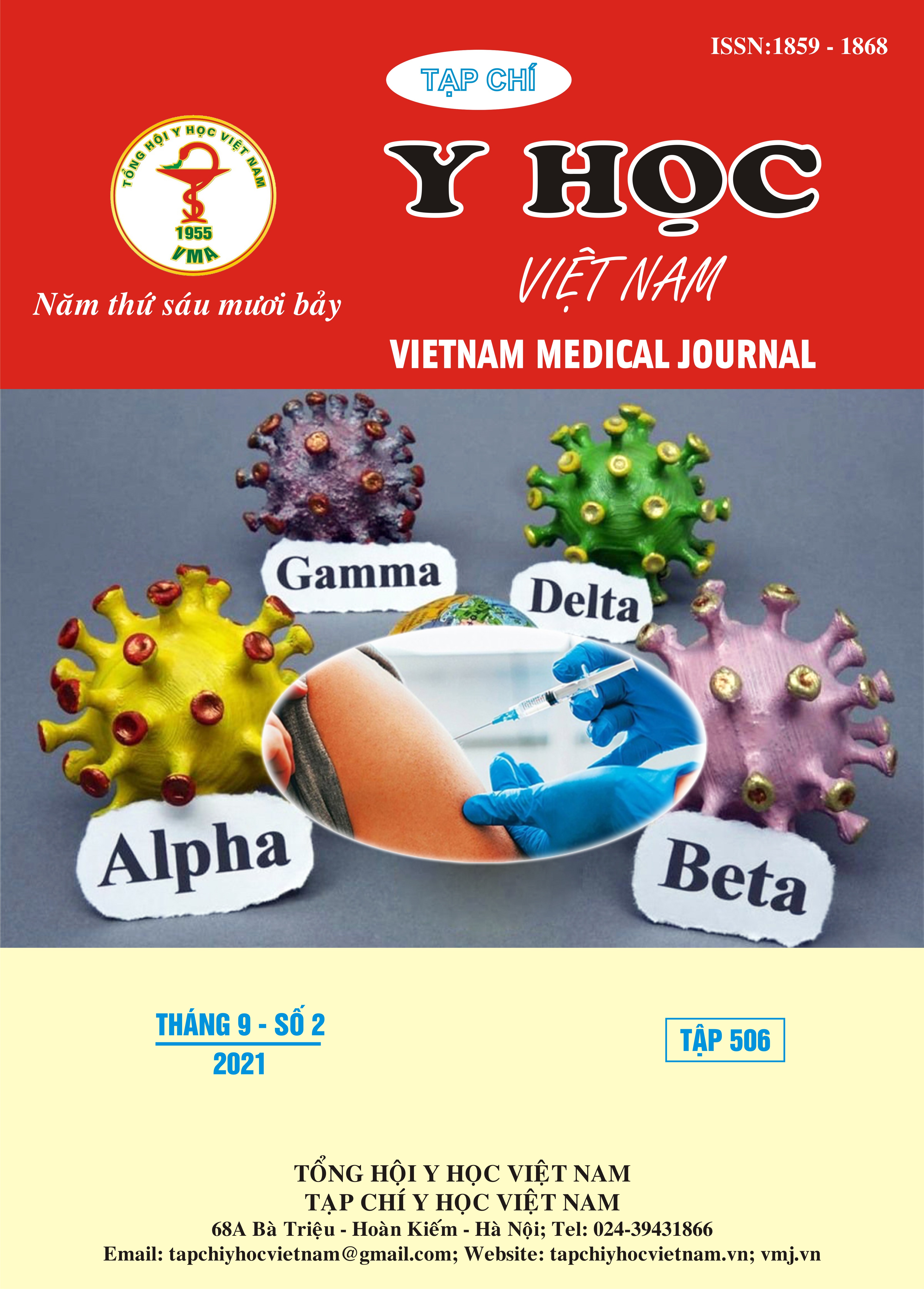ĐÁNH GIÁ HIỆU QUẢ IN VITRO CỦA CÁC PHỐI HỢP KHÁNG SINH TRÊN PHẾ CẦU GÂY VIÊM PHỔI CỘNG ĐỒNG Ở TRẺ EM
Nội dung chính của bài viết
Tóm tắt
Đặt vấn đề: Kháng sinh và các phác đồ phối hợp là các liệu pháp chính trong điều trị viêm phổi cộng đồng (VPCĐ). Trước những thách thức gia tăng nhanh chóng các chủng vi khuẩn phế cầu (PC) đa đề kháng tại Việt Nam, cần thiết phải đánh giá lại hiệu quả của các phối hợp kháng sinh nhằm hỗ trợ kiểm soát đề kháng kháng sinh và lựa chọn liệu pháp điều trị phù hợp. Mục tiêu nghiên cứu: Khảo sát sự hiệp đồng tác dụng của một số phối hợp kháng sinh đang được sử dụng trong điều trị VPCĐ ở trẻ em trên các chủng phế cầu đa kháng. Phương pháp nghiên cứu: Nghiên cứu thực nghiệm đánh giá hiệu quả hiệp lực tác động của một số cặp phối hợp kháng sinh trên phế cầu đa kháng bằng phương pháp E-Test. Kết quả: Sự hiện diện của azithromycin, gentamicin làm giảm MIC của các kháng sinh sử dụng trong phối hợp với cefotaxim, ceftriaxon trên chủng PC. Các kháng sinh trong các cặp phối hợp (gentamycin + cefotaxim) và (gentamicin + ceftriaxon) làm tăng tác dụng hỗ trợ lẫn nhau trên chủng PCa, tuy nhiên chưa có tác dụng hiệp lực rõ ràng. Các cặp phối hợp macrolid và beta-lactam chưa thể hiện được tác dụng hiệp đồng diệt khuẩn in vitro. Kết luận: Trong trường hợp VPCĐ do phế cầu đa kháng thuốc, các phối hợp giữa nhóm macrolid và beta-lactam không đem lại hiệu quả hiệp lực tác động in vitro so với kháng sinh riêng lẻ. Các bác sĩ lâm sàng có thể cân nhắc lựa chọn các cặp kháng sinh phù hợp để nâng cao hiệu quả điều trị.
Chi tiết bài viết
Từ khóa
Phối hợp kháng sinh, in vitro, E-test, viêm phổi cộng đồng, phế cầu khuẩn
Tài liệu tham khảo
2. Caballero J, Rello J. Combination antibiotic therapy for community-acquired pneumonia. Annals of intensive care. 2011;1:48.
3. Larsson M, Nguyen HQ, Olson L, Tran TK, Nguyen TV, Nguyen CTK. Multi-drug resistance in Streptococcus pneumoniae among children in rural Vietnam more than doubled from 1999 to 2014. Acta Paediatrica. 2021;110(6):1916-23.
4. M07-A9 C. Methods for Dilution Antimicrobial Susceptibility Tests for Bacteria That Grow Aerobically. Edition N, editor: Wayne, PA: Clinical and Laboratory Standards Institute; 2012.
5. Liofilchem. MIC Test Strip Technical Sheet Synergy Testing 2016. Available from: http://www.liofilchem.net/login.area.mic/technical_sheets/MTS31.pdf.
6. M100-S21 C. Performance Standards for Antimicrobial Susceptibility Testing. Edition AS-s, editor. Wayne: Clinical and Laboratory Standards Institude; 2011.
7. Lin E, Stanek RJ, Mufson MA. Lack of synergy of erythromycin combined with penicillin or cefotaxime against Streptococcus pneumoniae in vitro. Antimicrobial agents and chemotherapy. 2003;47(3):1151-3.
8. Washington JA, 2nd. Discrepancies between in vitro activity of and in vivo response to antimicrobial agents. Diagnostic microbiology and infectious disease. 1983;1(1):25-31.
9. Ruppen C, Decosterd L, Sendi P. Is gentamicin necessary in the antimicrobial treatment for group B streptococcal infections in the elderly? An in vitro study with human blood products. Infectious diseases (London, England). 2017;49(3):185-92.
10. Paul M, Lador A, Grozinsky‐Glasberg S, Leibovici L. Beta lactam antibiotic monotherapy versus beta lactam‐aminoglycoside antibiotic combination therapy for sepsis. Cochrane Database of Systematic Reviews. 2014(1).


